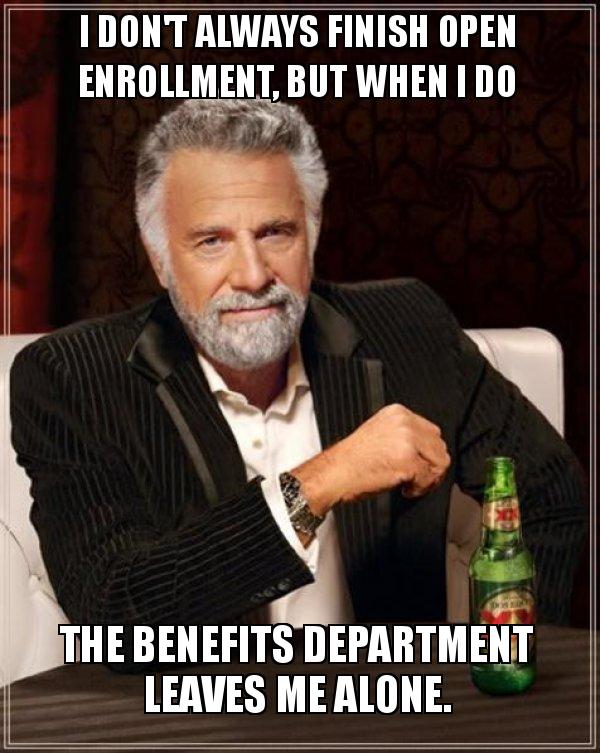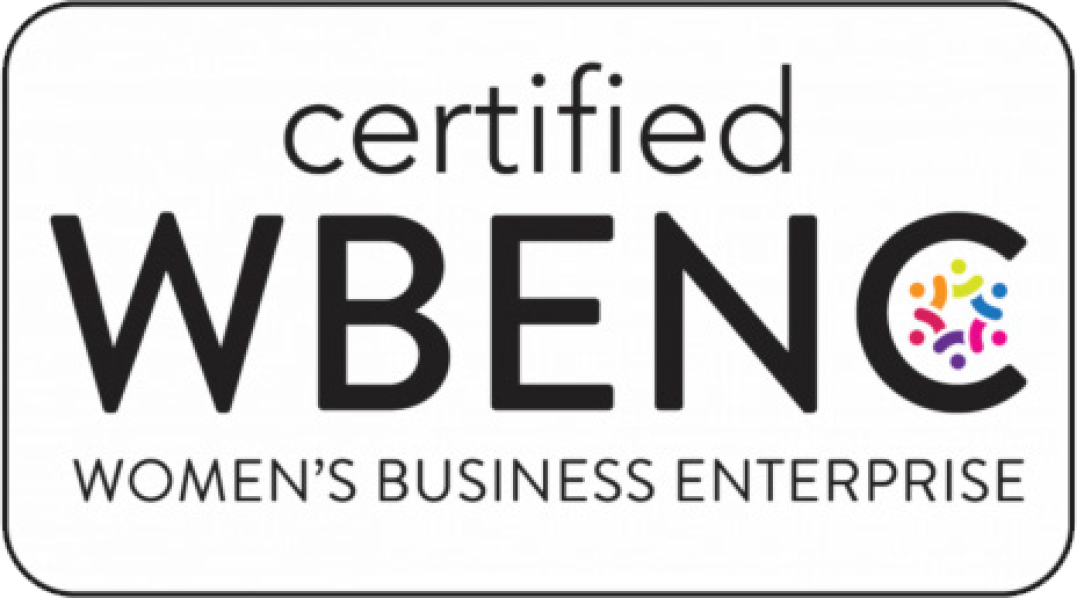
Spring Strategy = Fall Success. Are you ready for AE?

Edition 4, Vol. #3 April 2025
Hi, friend,
What do you really think about your company’s annual enrollment communications?
Eek …. Have I hit a nerve? Are they a mix of ambiguity, last-minute scrambles and a wall of legal jargon? Do you feel yourself check out before or after revision #24?
You’re not alone — and, as business leaders, you don’t have to settle for it.
We’ve seen what happens when companies take a more strategic, people-first approach to benefits communication. It’s not just about benefit elections and eligibility periods. Done right, benefits comms can:
- Reduce HR headaches
- Boost employee engagement
- Improve retention
- Even make people healthier
In this issue, we’re sharing three practical ideas to elevate your benefits communication strategy. And if AE isn’t your responsibility, maybe you’ll find ideas for how to give some gentle guidance.
If the idea of taking AE communications off your shoulders this fall makes you breathe a little easier, let’s chat. Zero pressure, just a conversation about what we’re seeing and how we might help.
Drop me an email at the link below.
Warmly,

Mary Pat Nimon
President
idea one
But our benefits aren’t anything special

Maybe it’s true: Your benefits aren’t any better than the company’s down the street.
But if your communications are clear, human and thoughtfully timed — they feel better. More approachable. More generous. More valuable.
That’s not spin. That’s strategy.
In the early 1900s, advertising pioneer Claude Hopkins visited the Schlitz beer factory. He noticed their careful brewing process — cold filtration, steam-cleaned bottles, pure artesian water.
“Why don’t you talk about this?” he asked.
The answer: “Because every brewery does it.”
But Hopkins turned those everyday practices into a compelling story — and made Schlitz one of the best-selling beers in America.
Remember: It’s not just the benefits you offer. It’s how you tell the story.
idea two
Make your benefits communications work harder

If you’re involved in annual enrollment, you already know how much time, coordination and budget it takes to get the message out. Benefits guides, meetings, videos, emails, intranet updates, Q&A sessions — it’s a lot.
Are employees actually using what you’re offering?
In one case, we worked with a company whose mental health benefits were good — but barely anyone was using them. It wasn’t because people didn’t need them. People didn’t know what was available or didn’t understand how to access it.
We helped them clarify the message and simplify the experience. The benefits were the same, but the communications were greatly improved.
The result? A 30% increase in usage.
It’s a reminder that when benefits are communicated clearly and with care, people take action. They get the support they need. And the investment you’re already making starts to work harder for everyone.
Let’s resolve to make benefits comms pay off – especially in the ways that matter most.
idea three
Sure, it’s spring. But fall annual enrollment is right around the corner.

We get it — the flowers are blooming, and benefits might not be top of mind.
But the most effective enrollment campaigns? They start now.
Waiting until late summer often means rushed timelines, limited creative bandwidth and a missed opportunity to really connect with employees when it matters most.
If you’re thinking about bringing in a communications partner this year, now’s the time — before the crunch hits.
Here’s a quick checklist of what to look for in a great partner:
- Strategic thinking, not just pretty design
Look for a partner who can help you clarify what needs to be said to your unique employee populations — and when. The best campaigns start with strategy, not templates. - The ability to make complex information feel simple
From high-deductible plans to mental health benefits, great communicators break down legalese into language real people understand. - Familiarity with HR and benefits
It’s not just about being creative — it’s about understanding compliance, enrollment deadlines and the internal pressures HR teams face.
- A track record of impact
Ask for examples. How exactly has the agency driven results for clients?
- A team that feels like an extension of yours
You want a partner who’s responsive, collaborative and easy to work with — especially when timelines get tight.
You don’t have to do this alone — and you don’t have to wait until August.
(& a meme)
When you know, you know.


Spring Strategy = Fall Success. Are you ready for AE?

Edition 4, Vol. #3 April 2025
Hi, friend,
What do you really think about your company’s annual enrollment communications?
Eek …. Have I hit a nerve? Are they a mix of ambiguity, last-minute scrambles and a wall of legal jargon? Do you feel yourself check out before or after revision #24?
You’re not alone — and, as business leaders, you don’t have to settle for it.
We’ve seen what happens when companies take a more strategic, people-first approach to benefits communication. It’s not just about benefit elections and eligibility periods. Done right, benefits comms can:
- Reduce HR headaches
- Boost employee engagement
- Improve retention
- Even make people healthier
In this issue, we’re sharing three practical ideas to elevate your benefits communication strategy. And if AE isn’t your responsibility, maybe you’ll find ideas for how to give some gentle guidance.
If the idea of taking AE communications off your shoulders this fall makes you breathe a little easier, let’s chat. Zero pressure, just a conversation about what we’re seeing and how we might help.
Drop me an email at the link below.
Warmly,

Mary Pat Nimon
President
Let me know and I’ll cue the marching band.

Mary Pat Nimon
President
idea one
But our benefits aren’t anything special

Maybe it’s true: Your benefits aren’t any better than the company’s down the street.
But if your communications are clear, human and thoughtfully timed — they feel better. More approachable. More generous. More valuable.
That’s not spin. That’s strategy.
In the early 1900s, advertising pioneer Claude Hopkins visited the Schlitz beer factory. He noticed their careful brewing process — cold filtration, steam-cleaned bottles, pure artesian water.
“Why don’t you talk about this?” he asked.
The answer: “Because every brewery does it.”
But Hopkins turned those everyday practices into a compelling story — and made Schlitz one of the best-selling beers in America.
Remember: It’s not just the benefits you offer. It’s how you tell the story.
idea two
Make your benefits communications work harder

If you’re involved in annual enrollment, you already know how much time, coordination and budget it takes to get the message out. Benefits guides, meetings, videos, emails, intranet updates, Q&A sessions — it’s a lot.
Are employees actually using what you’re offering?
In one case, we worked with a company whose mental health benefits were good — but barely anyone was using them. It wasn’t because people didn’t need them. People didn’t know what was available or didn’t understand how to access it.
We helped them clarify the message and simplify the experience. The benefits were the same, but the communications were greatly improved.
The result? A 30% increase in usage.
It’s a reminder that when benefits are communicated clearly and with care, people take action. They get the support they need. And the investment you’re already making starts to work harder for everyone.
Let’s resolve to make benefits comms pay off – especially in the ways that matter most.
idea three
Sure, it’s spring. But fall annual enrollment is right around the corner.

We get it — the flowers are blooming, and benefits might not be top of mind.
But the most effective enrollment campaigns? They start now.
Waiting until late summer often means rushed timelines, limited creative bandwidth and a missed opportunity to really connect with employees when it matters most.
If you’re thinking about bringing in a communications partner this year, now’s the time — before the crunch hits.
Here’s a quick checklist of what to look for in a great partner:
- Strategic thinking, not just pretty design
Look for a partner who can help you clarify what needs to be said to your unique employee populations — and when. The best campaigns start with strategy, not templates. - The ability to make complex information feel simple
From high-deductible plans to mental health benefits, great communicators break down legalese into language real people understand. - Familiarity with HR and benefits
It’s not just about being creative — it’s about understanding compliance, enrollment deadlines and the internal pressures HR teams face.
- A track record of impact
Ask for examples. How exactly has the agency driven results for clients?
- A team that feels like an extension of yours
You want a partner who’s responsive, collaborative and easy to work with — especially when timelines get tight.
You don’t have to do this alone — and you don’t have to wait until August.
(& a meme)
When you know, you know.

 SUBSCRIBE TO
SUBSCRIBE TO
Three fresh ideas (and a meme)
Our monthly take on today’s marketing and communications topics… and a little fun, too.


